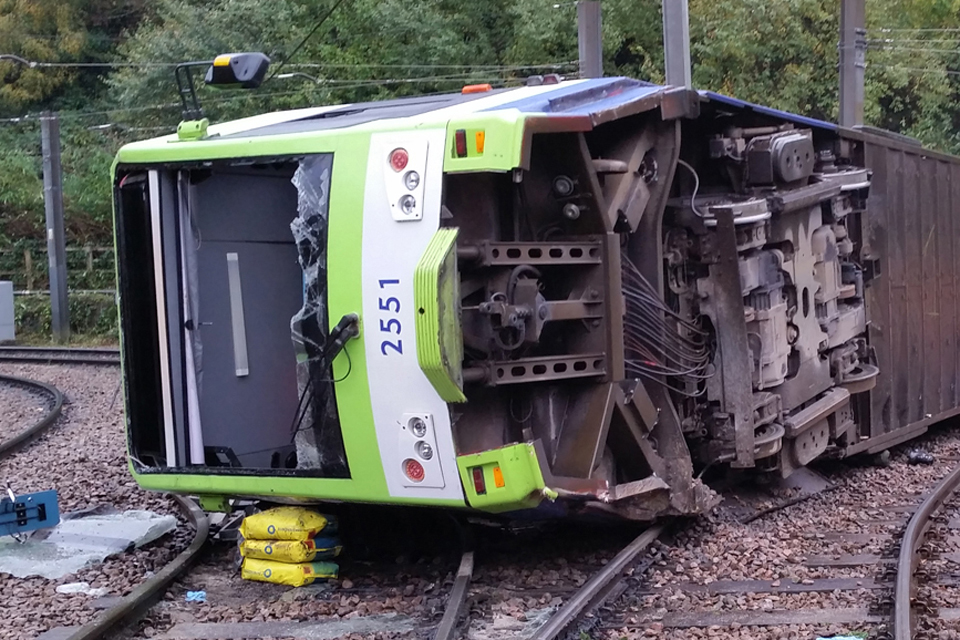When writing these articles I try to keep away from anything unpleasant as I want a visit to the Hungerford Antiques Arcade website to be a pleasant experience and not one of doom and gloom as there is enough of that in the world today. But my hand was forced slightly when I found a book called Tram Disasters (British and Foreign Tram Crashes and Accidents) in the book section under Rafters Café. Obviously by its very title, it was not going to be pleasant read (although the book by Peter Tuffrey is incredibly well researched).
I cannot remember the old trams and have only seen them in museums and the like but I had been aware of an accident that happened in Dover in 1917 and for many years it has always fascinated me as I know the town to some extent.
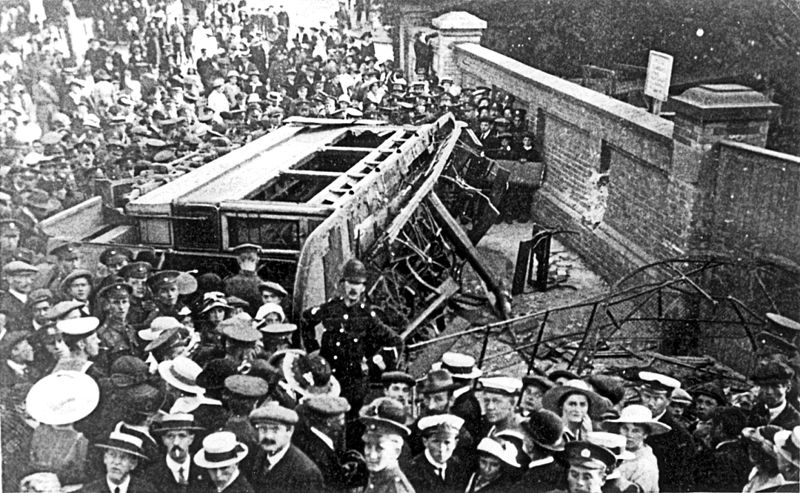
Unknown photographer [Public domain], via Wikimedia Commons
As most of you are aware, I am fond of football and try to watch the local sides when I am in Kent, whether it be Margate, Deal or Dover to name just three. Although I was not aware of it at the time when I walked up to Dover’s ground, I was passing the scene of the most severe tram accidents in English transport history. In short, on the 19th of August 1917, eleven people were killed and fifty-nine injured when a tram ran out of control down the steep incline from Crabble Hill to the athletics ground. The tram was an open top double decker car (Number 20) which crashed into the wall at the foot of the hill. The tram hit the wall with such force that it crashed on to its side which resulted in such a high number of fatalities. My researches indicate that the wall in question is still standing and has not changed that much. There is a account of the accident on the internet and if my memory serves me correct, a number of then had no photographs.
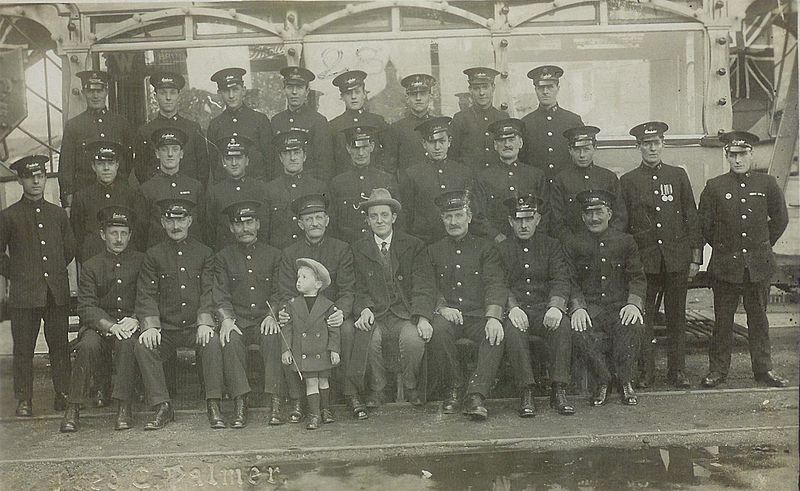
Fred C. Palmer (died 1936-1939) [Public domain], via Wikimedia Commons Portrait photo of a group of tram drivers and personnel at Swindon, Wiltshire, England in 1924-25. From a postcard deposited at Swindon Record Office and scanned and uploaded by them to Flickr. The photographer was Fred C. Palmer of Tower Studio, Herne Bay, Kent ca.1905-1916, and of 6 Cromwell Street, Swindon ca.1920-1936. He is believed to have died 1936-1939
I will now leave Dover and head for my beloved Swindon where another fatal tram crash accident occurred on the 1st of June 1906. In a way, it was a perfect storm, with an overladen Swindon Corporation tram that had been shuttling visitors to and from the Bath and West of England Agricultural Show when suddenly it ran out of control down the Victoria Road which was a steep incline connecting the old and new areas of Swindon. Although a number of passengers jumped clear of the overcrowded tram, five people sadly died and many were injured. Poor maintenance of the braking system as well as a lack of communication between the tramway staff were said to have been the main causes, although the overcrowding did not help. I was vaguely aware that Swindon had a tram system but was not aware of this awful accident before reading Peter’s book.
Should you wish to research this incident further I am sure that there are accounts on the internet and the excellent library in Swindon should have records in their archives.
On a slightly lighter note, I am a great fan of Wetherspoons (Spoons) which to me, is the beginning and the end of eating out. You can forget all these expensive restaurants usually run by a named chef and loved by Guardian readers worldwide. These are places where rice pudding and fish cooked in the Bolivian style are the in thing. No matter that it tastes like a garlic drain, it was created by Marco or the Brothers Grimm so it must be good. No dissent will be tolerated.
When you go to Spoons, you get what you order with a free soft drink usually thrown in and it was because of this that I got to know Ramsgate a little bit better. As a treat, my lovely daughter booked a table at the recently opened Royal Victoria Pavilion on the sea front in the town. It was all that I expected of it and more. We had a great meal and walked it off before we returned to the car.
Anybody who knows Ramsgate will be aware that there is a rather sharp hill between Pugin’s house and the town proper and although I was not aware of it beforehand, this was the scene of another tram accident which as far as I can see incurred no fatalities although looking at the photographs of the event, you wonder how.
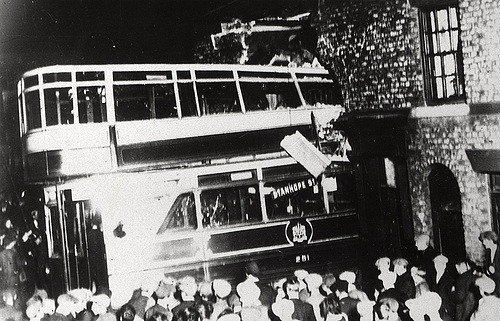
Public Domain Mark 1.0 A view of a B class tram car no.251 Stanhope Street Fenham taken in 1924. The photograph shows the tram car which has crashed into a house at the foot of Stanhope Street.
On the 3rd of August 1905 at just before noon, an open topped tram (Number 41) suddenly left the rails on the East Cliff and fell over the cliff (After hanging from the fence for a a short while). It plunged around thirty feet and although the driver was thrown against a disused building and was badly injured, the passengers and conductor only attracted slight injuries. Looking at old photographs, it is easy to pinpoint the scene of the accident as the harbour wall and the clock tower are still in position. When I am next in Ramsgate, I will visit the site now that am aware of its history. It appears that the drivers lack of experience with the braking systems was partially to blame for the accident. But as I have already noted, I wonder how anybody survived.
The book is a goldmine of information about tram accidents both in the UK and abrA great number of these were happily non fatal and I confess that I felt a warped nostalgia when reading the book which is very well illustrated. Maybe, it is like train crashes there is a curious fascination as to the causes and the improvements implemented.
I used to live in Ealing not far from the site of the 1973 crash and even these days, still remember looking over a nearby bridge at the wreckage of the train. The cause of the crash was simple and improvements were made and as far as I am aware, no similar accidents have occurred since that date.
But whilst trains are in our everyday consciousness, trams are not and that is what makes my book so fascinating. This said, trams are making a comeback and accidents still occur as the Croydon tram derailment in 2016 illustrated.
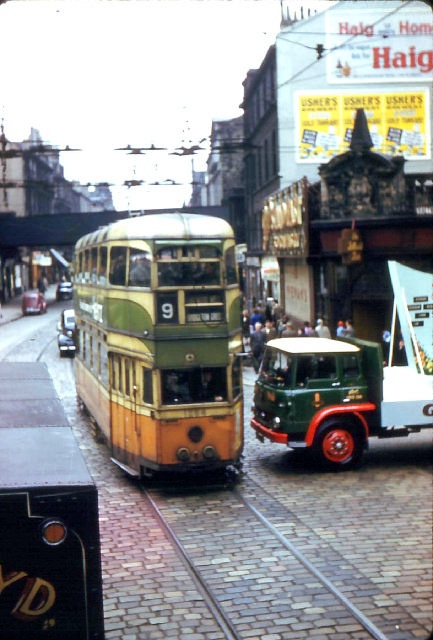
Creative Commons Attribution Share-alike license 2.0
This was the first tram accident involving fatalities since the Glasgow crash in 1959 and it shows that even with all our modern technology and safety features accidents can still happen. The tram derailed on a sharp curve due to excessive speed and the subsequent investigation revealed a catalogue of problems.
What I did find haunting was that the Croydon accident with its seven fatalities was the worst tram accident in the UK since the Dover crash ninety-nine years before.
We have come a long way but we have not arrived and probably never will and this little book illustrates this fact quite clearly.
As I have noted I have written about a dreadful subject and because of this, I dedicate this short article to all those killed or injured in tram accidents worldwide.
Stuart Miller-Osborne
